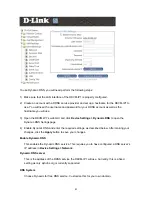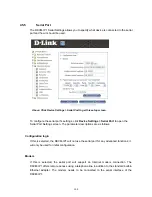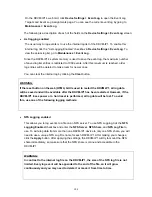
4.5.4
Certificate
The DKVM-IP1 uses the Secure Socket Layer (SSL) protocol for any encrypted network
traffic between itself and a connected client. While establishing a connection, the DKVM-IP1
has to expose its identity to a client using a cryptographic certificate.
NOTE
:
The default certificate that comes with the DKVM-IP1 device upon delivery is for
testing purposes only.
The system administrator should not rely on this default
certificate as a secured global access mechanism for access via the Internet.
It is possible to generate and install a new base64 X.509 certificate that is unique for a
particular DKVM-IP1. In order to do this, the DKVM-IP1 can generate a new cryptographic
key and the associated Certificate Signing Request (CSR) that will need to be certified by a
Certification Authority (CA)
.
A CA verifies that you are the person who you claim you are, and
signs and issues an SSL certificate to you.
Above: The Certificate Signing Request screen can be opened by clicking Settings >
Certificate.
To create and install an SSL certificate for the DKVM-IP1, do the following steps:
1. Create an SSL Certificate Signing Request by logging into the DKVM-IP1 web GUI and
clicking on
Device Settings > Certificate
. You need to fill out a number of fields that
96






























